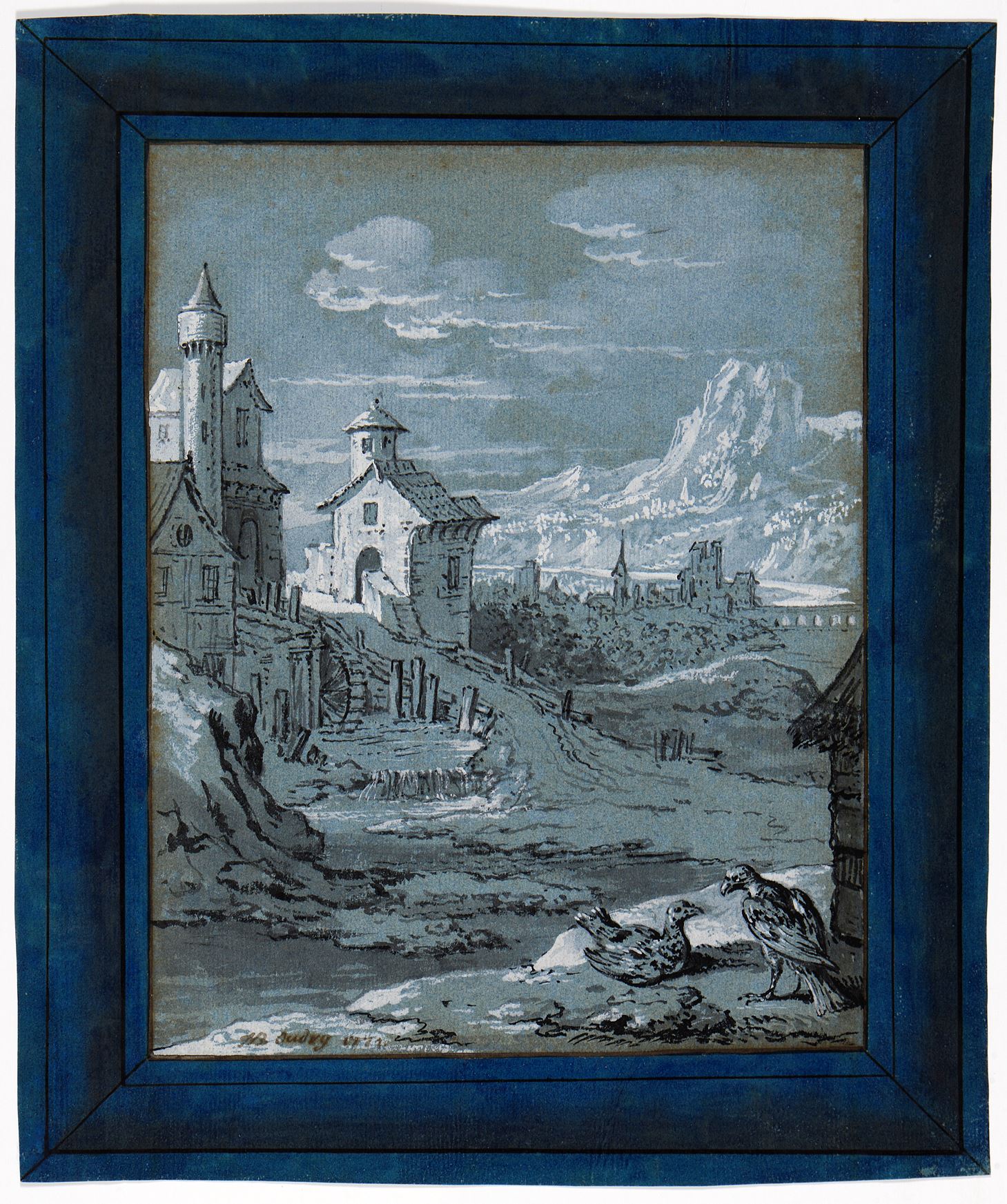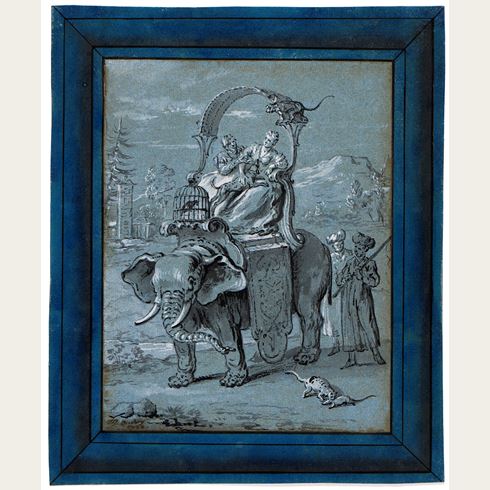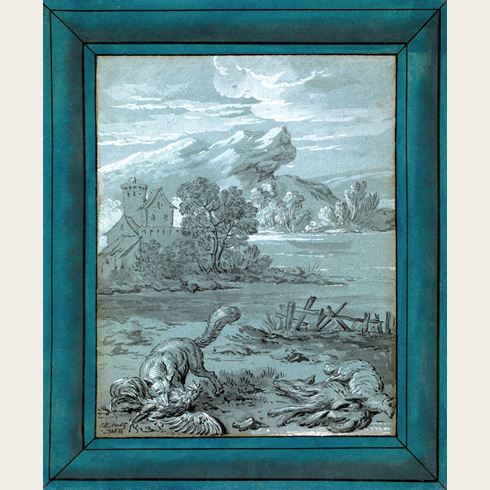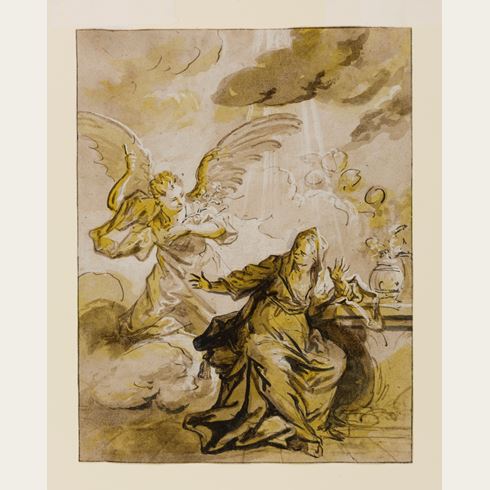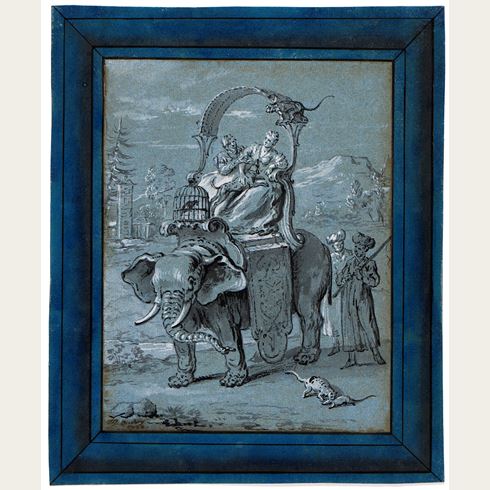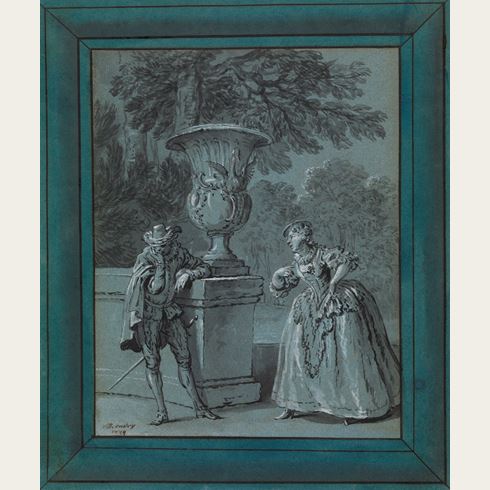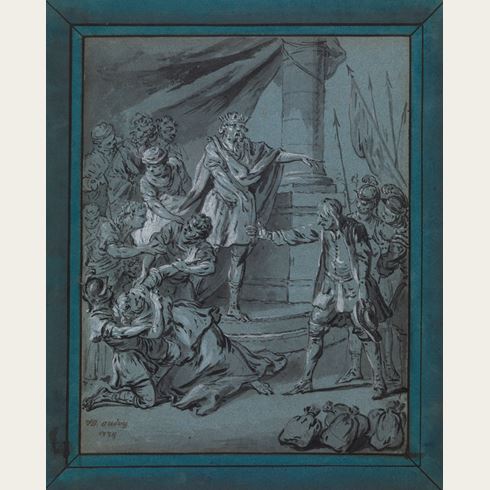Jean-Baptiste OUDRY
(Paris 1686 - Beauvais 1755)
The Fables of La Fontaine: The Two Pigeons
Signed and dated JB. Oudry 17(3)1 at the lower left.
Inscribed 47. t. 2e. on the verso.
248 x 191 mm. (9 3/4 x 7 1/2 in.) [image]
311 x 261 mm. (12 1/4 x 10 1/4 in.) [with fictive mount]
Nearly all of the drawings are signed and dated, and, to judge from the dates, the artist seems to have made the drawings in order, in the sequence that they appear in La Fontaine’s Fables. Oudry’s most ambitious undertaking as a draughtsman, the project to illustrate the Fables seems not to have been a commission, but instead was done on the artist’s own initiative, and his early biographer, the Abbé Louis Gougenot, notes that he worked on the drawings in the evenings.
It has been assumed that Oudry would have intended this series of drawings for the Fables to be engraved for publication, but this would have been a very expensive undertaking for the artist. Around 1751 Oudry sold the complete set of drawings to the amateur and collector Jean-Louis Regnard de Montenault, who decided to have them reproduced as prints and published as an illustrated book. Since Oudry’s drawings were thought to be too free in execution to be used as models by the engravers, Montenault commissioned Charles-Nicolas Cochin the Younger to make copies of each of Oudry’s drawings in a more linear style, and it was Cochin’s drawings that were used by the large team of engravers who worked on the project. Montenault’s celebrated edition of the Fables was published in four lavish volumes between 1755 and 1760, although Oudry himself did not live to see them. As Hal Opperman has pointed out, ‘It must be said that the confrontation of Oudry’s originals with the prints very much betrays the intermediary of Cochin. The human figures, in many cases, have benefited – but the animals have not. We state above that the La Fontaine illustrations, more than anything else, created and sustained posterity’s idea of the scope and the intrinsic qualities of Oudry’s art. But this judgment was based on the prints, not the drawings, which had almost never been seen: in fact, not one of them was even reproduced (in the modern sense) prior to the sale in 1973.’
The original 276 drawings by Oudry for the Fables of La Fontaine were bound together in two albums of dark blue calf, which remained intact and passed through several notable private collections until they were sold at auction in 1973. One of the volumes, containing illustrations from Books I to VI of the Fables, was eventually acquired by the British Rail Pension Fund and was sold again at auction in 1996. The second volume, illustrating episodes from Books VII to XII, was broken up in 1973 and the drawings dispersed. Many of these are now in public collections, including the Rijksmuseum in Amsterdam, the Art Institute of Chicago, the J. Paul Getty Museum in Los Angeles, the Metropolitan Museum of Art and the Morgan Library and Museum in New York, the National Gallery of Canada in Ottawa, the Musée du Louvre in Paris and the National Gallery of Art in Washington, D.C., among others.
The fable depicted in this drawing is taken from Book IX, Fable II. Two pigeons (the birds have sometimes later been described as doves) live together in friendship, but one longs for adventure and to explore the wider world. Despite the protestations of his companion, who fears for his safety, he eventually flies off on what he believes will be a short voyage of just three days, after which he promises to return to regale his friend with tales of his grand adventures. During his travels, however, the pigeon is trapped in a rainstorm without shelter, caught in a net from which he just manages to escape, is then attacked by a vulture and finally is injured by a boy with a sling. The pigeon returns home ‘half dead, half crippled’ to rejoin his friend, and vows never to roam again. La Fontaine’s fable was adapted as a ballet with music, entitled Les deux pigeons, by André Messager in the late 19th century, and choreographed anew by Frederick Ashton in 1961.
Oudry was a prodigious draughtsman, and drawings were an integral part of his artistic practice. Although the 18th century art historian Antoine-Joseph Dezallier d’Argenville wrote of him that ‘His finished drawings are all in black chalk, highlighted with white using the brush [and] his studies are also in black chalk, highlighted with white chalk’, and while it is certainly true that black and white chalks were his favoured medium as a draughtsman, Oudry worked also in pastel, red chalk, brown ink and sepia wash. While the Oudry scholar Hal Opperman catalogued around a thousand drawings by the artist, many of these were only known through descriptions in old auction catalogues. While Oudry parted with some drawings in his lifetime, the vast majority of his output as a draughtsman – mainly studies of animals and birds, highly finished landscapes and book illustrations, carefully organized into albums - remained in his studio until his death.
Provenance

